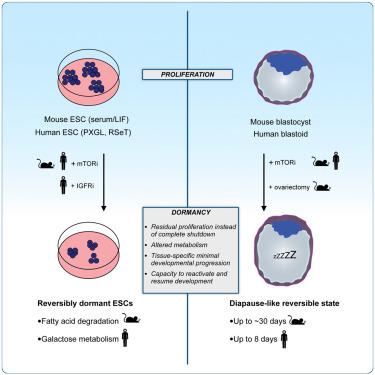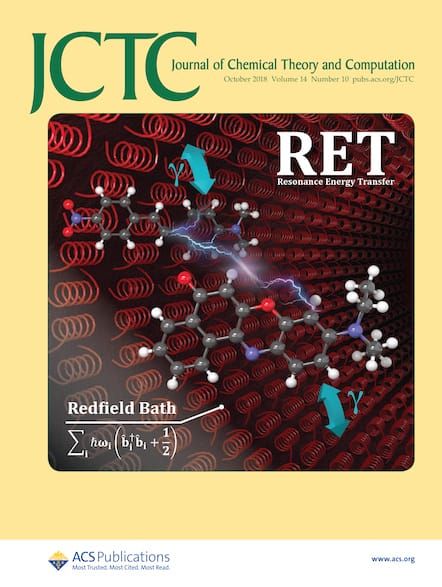mTOR 活性可加快人类胚泡阶段的发育进程
IF 5.7
1区 化学
Q2 CHEMISTRY, PHYSICAL
引用次数: 0
摘要
许多哺乳动物可以通过在囊胚阶段降低发育速度,在时间上使受孕与分娩脱钩。在小鼠中,这种休眠状态是通过降低调节生长的 mTOR 信号通路的活性来实现的。目前还不清楚这种能力是否在哺乳动物尤其是人类中得到了保留。在这里,我们展示了降低mTOR信号通路的活性可诱导人类多能干细胞(hPSCs)和胚胎干细胞进入休眠状态,其增殖、发育进程和附着于子宫内膜细胞的能力均受到限制。这些体外试验表明,与其他物种类似,人类细胞在胚泡阶段左右进入休眠的能力是活跃的,并且在功能和分子水平上都是可逆的。人类胚泡发育的节奏对生殖疗法具有潜在的影响。本文章由计算机程序翻译,如有差异,请以英文原文为准。

mTOR activity paces human blastocyst stage developmental progression
Many mammals can temporally uncouple conception from parturition by pacing down their development around the blastocyst stage. In mice, this dormant state is achieved by decreasing the activity of the growth-regulating mTOR signaling pathway. It is unknown whether this ability is conserved in mammals in general and in humans in particular. Here, we show that decreasing the activity of the mTOR signaling pathway induces human pluripotent stem cells (hPSCs) and blastoids to enter a dormant state with limited proliferation, developmental progression, and capacity to attach to endometrial cells. These in vitro assays show that, similar to other species, the ability to enter dormancy is active in human cells around the blastocyst stage and is reversible at both functional and molecular levels. The pacing of human blastocyst development has potential implications for reproductive therapies.
求助全文
通过发布文献求助,成功后即可免费获取论文全文。
去求助
来源期刊

Journal of Chemical Theory and Computation
化学-物理:原子、分子和化学物理
CiteScore
9.90
自引率
16.40%
发文量
568
审稿时长
1 months
期刊介绍:
The Journal of Chemical Theory and Computation invites new and original contributions with the understanding that, if accepted, they will not be published elsewhere. Papers reporting new theories, methodology, and/or important applications in quantum electronic structure, molecular dynamics, and statistical mechanics are appropriate for submission to this Journal. Specific topics include advances in or applications of ab initio quantum mechanics, density functional theory, design and properties of new materials, surface science, Monte Carlo simulations, solvation models, QM/MM calculations, biomolecular structure prediction, and molecular dynamics in the broadest sense including gas-phase dynamics, ab initio dynamics, biomolecular dynamics, and protein folding. The Journal does not consider papers that are straightforward applications of known methods including DFT and molecular dynamics. The Journal favors submissions that include advances in theory or methodology with applications to compelling problems.
 求助内容:
求助内容: 应助结果提醒方式:
应助结果提醒方式:


